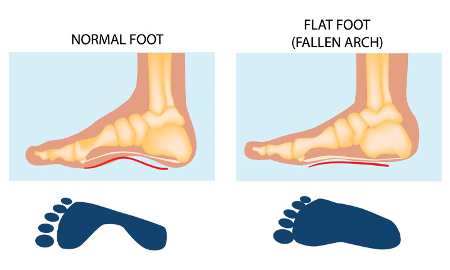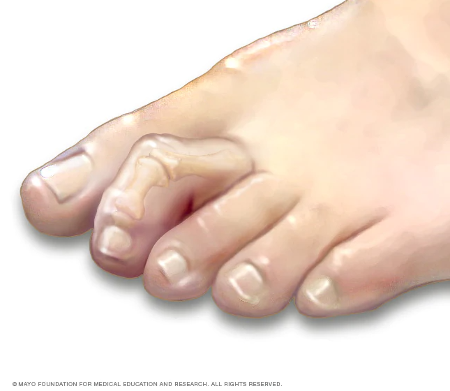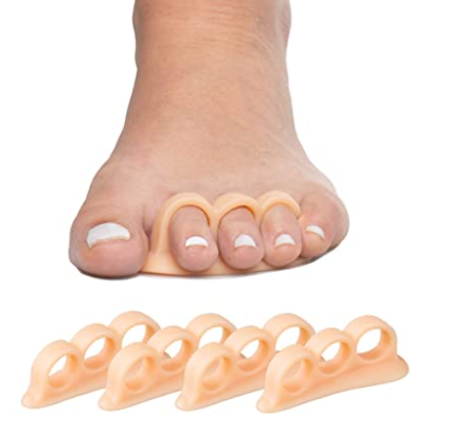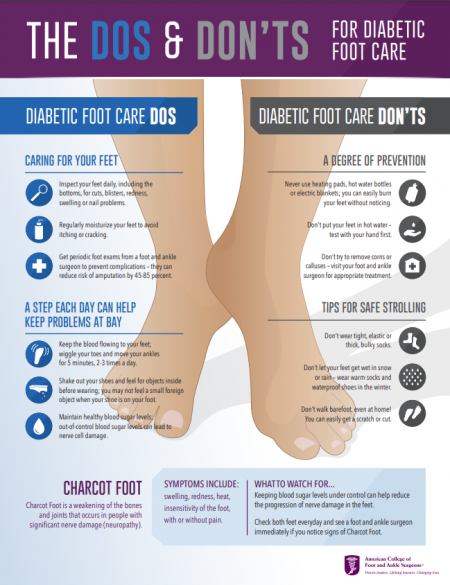Sometimes I feel like I’ve spent the last year living comfortably under a rock. To be fair, at least part of that is intentional; I have no regrets about skipping insouciantly over the loudest, most glaringly tragic headlines on my Google newsfeed, or about hosting a drown-out techno dance party in my head when the radio newscaster announces grimly that he has more (heart)breaking news.
Of course, this self-imposed security-blanket approach to life, while in many ways sanity preserving, has sadly also sheltered me from the more uplifting stories of the season: like the winter launch of a brand-new “Sex And The City” reboot on HBO Max.
Seriously, how did I remain oblivious all year that my favorite fictitious gals (minus sex-crazed Samantha) were returning to the TV screen?
A #CarrieBradshaw type of love. #AndJustLikeThat… streaming now on @hbomax ! pic.twitter.com/syRMnMr3I7
— And Just Like That… (@AndJustLikeThat) December 10, 2021
Far before “Grey’s Anatomy” captured my heart, SATC represented the longest uninterrupted relationship I’d ever had in my life, a stable and grounding presence during my otherwise tumultuous college years. The show made for the perfect weekly date night between me, my comfy cat slippers, and my spicy Chinese takeout. I laughed, I cried, I cursed out Mr. Big, and then, like Carrie Bradshaw, fell desperately in love again.
But perhaps most importantly, because I’m a slightly obsessive distance runner whose prized possessions are her feet, I couldn’t help but wonder: how swollen and mangled are Carrie’s feet after stomping around constantly in heels?
It’s no secret that stilettos are horrible for your foot health, and they even place a strain on your spine. Nevertheless, it seems like the more punishing the pump, the more fashionable the frenzy. I mean, just look at the illustrious Rihanna’s latest shoe endorsement: the Balenciaga X Vibram FiveFinger Toe heel, which combines the towering torture of a narrow heel with all the cringeworthy features of a barefoot shoe.
View this post on Instagram
(No wonder the beloved pop artist belted out “Shut Up And Drive” so commandingly – it’s because she couldn’t walk!)
Despite their deleterious toll on the tendons, stilettos and their spinoffs likely aren’t fading from the fashion scene anytime soon – especially now that Carrie is back to flaunting her Jimmy Choos across NYC. And why shouldn’t she, if she can strut around so confidently and gracefully (after all, love hurts)?
As much as I shun the trend, the truth is that wearing high heels is far from the sole reason a woman may develop foot problems during her lifetime, nor is it the most common. Foot pain and other podiatric issues are surprisingly prevalent across all demographics, and the causes are as varied as styles of shoe. In fact, a 2018 survey by the American Podiatric Medical Association (APMA) found that 75% of American adults have experienced a foot issue at some point in their lives, with half the respondents reporting that the problem was severe enough to limit activity.
Sound familiar? Whether you’ve already walked a mile in Carrie Bradshaw’s shoes, you’re planning to run a marathon in your brand-new Nike shoes, or you’re constantly tripping over your toddler’s shoes, the first step to fixing your achy feet is to narrow down the source. Once you’ve gotten to the bottom of why your feet hurt, you can take action to fix it. (And don’t worry if you’re one of those women who is irrationally embarrassed by her feet – foot shame is an issue for another article, but for now, know that there are plenty of things you can do for your feet from home, before you rush to the doctor.)
Ready to get your feet wet? According to medical experts, here are some of the most common lower-extremity problems that may be slowing you down – and some solutions to bring back the spring in your step:
Plantar Fasciitis
“Plantar fasciitis is a very common problem and one that I see in patients almost every day,” says William Spielfogel, DPM, a New York-based podiatrist and medical advisor at The Good Feet Store. “It’s an inflammation of a thick band of tissue running along the bottom of the foot that connects the heel bone to the base of the toes. It’s an overuse injury caused by repetitive strain of the plantar fascia, which could be running, walking, or trauma, such as landing for jumping,” he explains.
But plantar fasciitis can afflict even women who are sedentary, especially if they are carrying some extra weight. “Extra weight means extra pressure on your plantar fascia and Achilles tendon,” warns Kristina DeMatas, DO, a sports medicine physician at the Mayo Clinic in Jacksonville, Fla. “A recent study found a link between high BMI [body mass index] and plantar fasciitis. Shed the extra pounds and get pain relief, too,” she advises.
The Fix
Aside from maintaining a healthy weight, you can keep your fascia functional by focusing on proper support. “In order to alleviate the pain caused by plantar fasciitis, you’ll want to make sure your feet are properly supported and stabilized,” says Dr. Spielfogel. “Many times, off-the-shelf footwear doesn’t provide enough support, and you should consider personalized arch supports for increased comfort and shock absorption,” he explains.
In addition, stretching can reduce discomfort and is key to a speedy recovery, says Dr. DeMatas, who recommends plantar fasciitis treatment exercises such as calf stretches, leg lifts, and ballet raises. “Some of these exercises require zero equipment. Others require household items like a chair or a towel. It’s important to remember that you must be diligent and consistent to see results. Commit to at least 15 to 20 minutes a day. It’s all about grit,” she encourages.
If the condition persists, you can explore other conservative options such as physical therapy, orthopedic strappings, cortisone injections, custom-made orthotics, or shockwave therapy, suggests Bruce Pinker, DPM, a podiatrist in New York. “As a last resort, surgical options can be explored to address plantar fasciitis,” Dr. Pinker notes.
Flat Feet
Do your feet seem to lack the classic arches? “Flat feet, or pes planus, is a condition in which the foot does not have a normal arch while standing, and often the arches on the inside of the feet are so flattened that the entire sole of the feet touch the floor. This can occur when the arches do not develop in childhood, or from wear and tear of the tendon that runs along the inside of the ankle,” explains Pamela Mehta, MD, an orthopedic surgeon in San Jose, Calif, and medical advisor at The Good Feet Store. “As you can imagine, flat feet will have an effect on the rest of your alignment and may cause pain along the inside of your feet, heels, ankles, shins, and knees – and can also cause back pain or spinal alignments. Those with flat feet may also exhibit inflammation and fatigue along the inner side of the feet and ankles,” she says.
The Fix
Since most people with flat feet are born that way, you can’t reverse this condition – but you can reduce pain with proper footwear and support. “You can buy pre-made inserts on Amazon,” notes Dr. DeMatas. “Supportive shoes can make a difference, too. Look for shoes with good arch supports, choose athletic shoes over high heels, and always avoid going barefoot. Consider getting custom orthotics if you have a hard time buying one that is comfortable,” she recommends. For example, you can find great Orthotics and Insoles for Plantar Fasciitis from Docpods.
Hammer Toe
If you start to notice an abnormal, upward bend in your second, third, or fourth toe, you may be developing a hammer toe. “A hammer toe is a contracture of the digits of the foot,” explains Dr. Pinker. “Often, over time, the toe rises higher and higher, hitting into the top of the toe box of a shoe. In some cases, a hard corn can develop on the top of the toe,” he says.
The Fix
Ultimately, notes Dr. Pinker, “hammer toes usually need to be addressed surgically, as devices that hold the toe in place often do not provide long-term correction.” In the meantime, though, you can keep your toes aligned and alleviate discomfort with correctors like the ZenToes Hammer Toe Straightener, the ViveSole Toe Split, or the Pedifix Toe Straightener.
Bunions
A bunion, referred to as a hallux abducto valgus (HAV) deformity, is a bony bump that forms at the base of the big toe. “This painful and progressive condition is caused by unstable bones in the foot that shift, causing the big toe to drift out of alignment,” explains Paul Dayton, DPM, a podiatrist in Ankeny, Iowa. “As summer quickly approaches, many people living with bunions are reminded of the condition when they experience excruciating pain during their daily jog or see the unsightly bump on their foot when they put on sandals,” he says.
According to Dr. Pinker, “bunions are often developed due to improperly fitting footwear, although some individuals are born with this deformity.”
The Fix
As with many foot problems, prevention is the best medicine. “It is best to wear quality footwear that fits properly to help avoid bunions,” Dr. Pinker says. If you do see a budding bunion, he recommends gently massaging the area or soaking it in Epsom salt to reduce soreness. “In some cases, the usage of custom-made orthotics can prevent the progression of a bunion by addressing biomechanical deformities,” he adds.
Corns
“Corns are round circles of thickened skin on your toes or the sole of your feet. They are caused by bunions, hammer toes, or poorly fitting shoes,” explains Rudolf Probst, MD, an internal medicine physician from Switzerland. Unlike calluses, which are larger areas of hardened skin, corns are often surrounded by inflammation and can be painful when pressed.
The Fix
Avoiding corns is usually as simple as wearing well-fitting shoes, using inserts, or adding protective foot pads, says Dr. Probst. If you’ve already developed corns on your feet, you can address them with over-the-counter remedies such as corn-removal plasters, which apply pressure to the area and help it heal quickly with salicylic acid. “Alternatively, your doctor may recommend surgery,” Dr. Probst says, but corn removal is typically a quick, outpatient procedure in which the layers of dead skin are shaved down.
Diabetic Foot Issues
For many common foot problems, an orthotic a day can keep the doctor away – or at least, for now, keep the pain and discomfort at bay. If you’re one of the 34.2 million Americans with diabetes, however, you may encounter a few more bumps in the road to relief. That’s because diabetic foot problems stem from long-term damage due to poorly managed blood sugar.
“Diabetic foot problems need some serious TLC,” notes Veera Gupta, DC, CCSP, a chiropractor in New Jersey. “The problem with diabetes is that it’s so systemic that it wreaks havoc on multiple systems at once. It causes retinopathy, nephropathy, arteriosclerosis, and neuropathy, for starters,” she says.
Diabetic peripheral neuropathy, or DPN, is one major complication of diabetes that can negatively affect the feet. This condition refers to diabetes-induced nerve damage that includes numbness, tingling, and/or burning. “Diabetic neuropathy is tough because typically, you can’t feel your feet and so you are heavy footed, destroying and degenerating the very bones of the foot,” Dr. Gupta says. Additionally, diabetic foot ulcers commonly occur in people with uncontrolled diabetes, leading to infection, inflammation of the bone, and – in the most severe cases – amputation.
The Fix
Unfortunately, due to their underlying etiology, diabetic foot conditions typically don’t have a quick fix – but, with meticulous monitoring, they can be managed for improved foot health. “If blood sugar levels can be reduced, sometimes the neuropathy can be reduced,” Dr. Pinker notes, although this can be difficult to achieve. For the best preventive foot care, “all diabetics should have their feet checked by a podiatrist annually, and those at higher risk should have the toenails and calluses trimmed by a podiatrist periodically,” he says.
In the meantime, if you’re hoping to alleviate neuropathic pain, Dr. Gupta advises that “light daily massage done by hand, foot soaked in Epsom salt, and a quick trip to a physical therapist or a gym’s VibePlate are all good places to start. The VibePlate [a machine that uses whole-body vibration therapy] is awesome because it gets the mechanoreceptors in the foot, called Pacinian receptors, to fire again, telling the parts of the brain assigned to the feet to pay closer attention.”
As for preserving the healthy nerves before they’re destroyed by diabetes, Dr. Gupta says there’s hope. Specifically, since B vitamins help regenerate nerves, taking a supplement can have a protective effect. “A sublingual B12 vitamin can help because it is absorbed directly through the mouth,j bypassing the need for good stomach absorption,” she explains.
But there’s even more promising news, according to Dr. Gupta: If your neuropathy is still on the milder side, you might be able to actually promote healing of the nerves – that is, reverse some of the damage – just by boosting your gut health. Consuming “16 different greens, even if just a few leaves of each; some fiber; and some short-chain fatty acids may actually help heal the pathways that started the diabetes in the first place,” she says. “These diversify the gut microbiome, which helps modulate insulin. Who knew that greens could help your feet?” Well, now you do!
Two Steps Forward, One Step Back
Prevention measures, pain relievers, products you can buy… What do these strategies all have in common (besides starting with the letter “P”)? They all involve taking a step forward and doing something, of course.
But for most physical maladies, there’s just as much healing power in the act of not doing – that is, taking a step back to rest.
“I know that taking a break from physical activity isn’t always an option. However, if you can afford to take it easy for a few days, it’s certainly worth a shot,” says Dr. DeMatas. “After all, plantar fasciitis [for example] is an overuse injury. It’s your body’s way of telling you that your foot is tired. Resting gives your foot the time it needs to heal and recover.” she says.
In other words, Netflix and chill — and take a break from those Carrie Bradshaw heels (because we all know that she won’t, even two decades later).
Have you successfully treated a foot problem using one of these recommended remedies? Do you have any advice for current sufferers? Share your experiences in the comments!
For More Ways To Keep Your Feet And Body Healthy, Check These Out:











